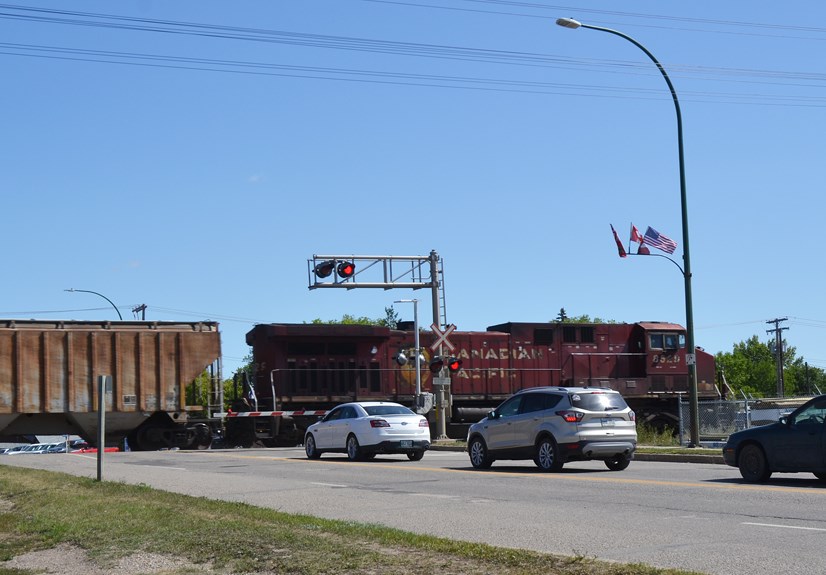September 21-27 is Rail Safety Week, and with several fatalities in Manitoba, RCMP want to bring attention to Operation Clear Track.
September and August have seen five Manitobans die and one sustain life-threatening injuries after collisions with trains.
All crossings are clearly marked. Some have arms that descend and flashing lights, smaller crossings do not but it is important to treat all crossings with caution.
When waiting for a train to pass, RCMP advise that vehicles should stop at least four and a half metres away from the rails.
“When it comes to a train versus a car, the train will win every time,” said Staff Sergeant Kyle McFadyen of Manitoba RCMP Traffic Services. Their statistics show that a motorist is 40 times more likely to die in a train-vehicle collision than in a crash with another motor vehicle.
It takes the average freight train travelling at 90 kilometers per hour the length of 18 football fields to stop, so the train is unable to stop in time to avoid a collision. Crossing the tracks when there is an oncoming train is a deadly mistake.
Operation Clear Track, a partnership between Amtrak, Operation Lifesaver Inc., and Operation Lifesaver Canada, aims to reduce the number of railway incidents.
“A split-second decision to try to beat a train at a crossing, or to use tracks as a shortcut or recreational path, can have tragic consequences,” said Sarah Mayes, National Director of Operation Lifesaver Canada. “Operation Clear Track’s goal is to encourage people to think twice before engaging in unsafe behaviours, and to learn how to keep themselves safe around tracks and trains.”
By intentionally creating good habits at rail crossings, even when tired or distracted, the sight of the rail crossing will trigger safe practices that have become ingrained.
This year, the Operation LifeSaver is unveiling four poignant new videos to remind Canadians that they “can never go back” from taking risks around tracks and trains—risks that could cost them a limb, or even their life.
The four videos are the latest in OL’s #STOPTrackTragedies campaign and feature the voices of those personally affected by rail crossing and trespassing incident.
“The stories are heart-wrenching… They really urge people to make safe decisions around tracks and trains,” said Mayes. For more please visit operationlifesaver.ca.
WHEELCHAIRS, WALKERS, SCOOTERS
If you use a wheeled mobility device, you will likely come across train tracks at some point. The wheels of these devices can get stuck in tracks and this can lead to tragedy.
Important
- Only use designated railway crossings, where the tracks are most level with the ground.
- Stop, look and listen for approaching trains.
- If a train is approaching, or if railway warning signals are activated, stop behind any gates or stop lines— no closer than five metres from the nearest rail.
- Plan: establish your position so you can cross the tracks at a 90-degree angle.
- Caution when wet: tracks can be slippery and the wheels of your mobility device could skid if you cross too fast or don’t cross at a right angle.
- Get help: If your mobility device breaks down or gets stuck at a railway crossing, call for help from passing pedestrians, cyclists or motorists.
“Anyone approaching train tracks needs to pay extra attention to whether or not a train is approaching. Those few seconds could save your life.”




